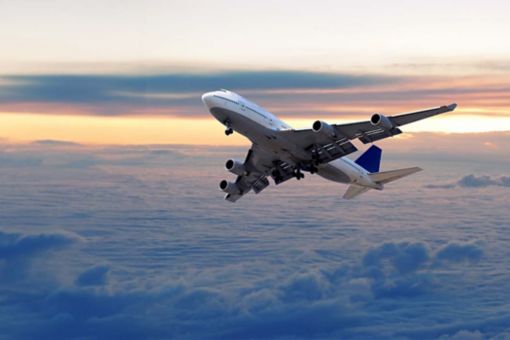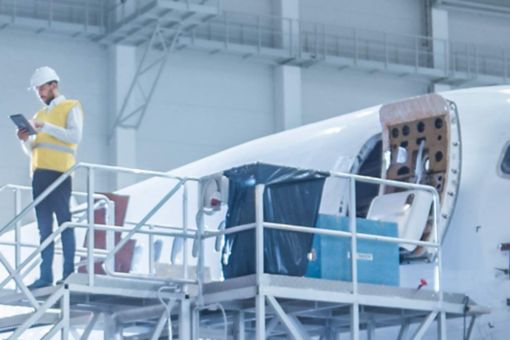Joe O’Mara, Head of Aviation Finance at KPMG Ireland, provides his overview of the key issues driving the aviation market over the past year and shares insights he has learned from his discussions with major aviation leaders.
We are delighted to present you with our Aviation Leaders Report 2024: Demand & Disruption. The report captures the views of industry leaders across the leasing, airline and banking markets and includes input from rating agencies and analysts covering the sector.
Our report last year focused on the encouraging recovery that was taking place, primarily driven by US and European markets, and how the financing market was adapting to an environment where interest rates had begun to materially rise for the first time in over a decade.
The current environment is a very interesting place, where the significant tailwind of passenger demand is tempered by the many headwinds, not the least of which is the significant supply challenges the sector faces.
Airline performance and air traffic recovery
A new cycle begins. From the nadir of 2020 where airlines lost $140bn, IATA expects profits to return this year to the tune of over $23bn. This represents a remarkable turnaround and brings profitability close to 2019 levels.
As ever, profits have been predominately driven by the US market (over $14bn), with European airlines driving the bulk of the balance ($7.7bn).
The recovery in 2022 was fragmented, with significant challenges remaining across Asia-Pacific, not least of which being the prolonged travel restrictions in China. With all restrictions now lifted, Asia has bounced back strongly and 2023 saw global air travel rise above 2019 for the first time.
Given global GDP has increased significantly since that time, there remains a lot of growth to recapture.
While airlines around the world continue to be burdened with additional debt taken on during the pandemic, the strength of the recovery has meant that airline failures continue to be at a relatively low level, given historic norms.
Load factors have been impressive and, assisted by the supply issues discussed below, pricing has been robust. The evident pent-up demand and the increased appetite for premium leisure travel have been compensating factors against any reduction in business travel.
The industry is not immune to the evident macroeconomic and geopolitical challenges, though after the challenges of COVID, it is almost reassuring to be talking about oil, labour, and finance costs.
Labour has arguably been the most pressing of issues, with the global dearth of pilots driving that cost up significantly and general work force shortages impacting performance. Maintenance and the access to lift have also become increasing challenging and place an ever-increasing risk to growth and profitability.
Despite these headwinds, the general view of participants is that airline performance should continue to be robust in 2024, as the heighted desire to travel persists and any potential US slowdown being offset by opportunities driven out of the Asian recovery.

OEM and fleet focus
The great disruption within the sector has been the current state of aircraft manufacturing. As airlines clamour for additional lift to service demand, production delays and equipment malfunctions are causing havoc.
On the aircraft OEM side, order books are stacked and sold out until the next decade, but ramping up supply chains has continued to be a struggle. While Boeing and Airbus delivered almost 1,200 aircraft in 2023, this remains over 20% below the peak of 2018. Given the continuing issues, the market lacks confidence in their ability to meet their stated targets.
For Boeing, there are further woes to manage for its 737 MAX and the fallout from the issues relating to the Alaska Airlines malfunction in January of this year remain to be seen. As the company increases its focus on quality and safety, production rates are likely to suffer in the near term.
Compounding the airframe issues are material concerns on the engine side. The full scale of the reliability issues with the Pratt & Whitney GTF engine came to light last September and will have a significant impact on those operating the A320neo.
With already choric backlogs in MROs and shop visits taking up to a year, it is forecast that there will be an average of 350 aircraft on the ground due to the GFT issues between 2024 and 2026, with the peak impact being felt in the first half of this year.
The gross financial impact is forecast to be $6bn to $7bn and it leaves a number of airlines scrambling further for alternative lift. Compensation discussions will be interesting to observe.
It is estimated that the pandemic resulted in some 3,000 aircraft not being produced, coupling this with the supply challenges and the robust demand environment we are unsurprising seeing asset values materially increase across the board.
Though it is worth noting that some lease encumbered assets may suffer from transactions that were written or extended nearer the outset of the pandemic.
The wider trading environment has suffered from these OEM challenges, as larger lessors delayed divesting plans as they are forced to wait on deliveries.
The trading market improved somewhat over the course of 2023 and there is broad hope that this trendline will continue into this year.

Aviation finance
Having seen sharp rises throughout 2022, interest rates broadly settled by the second half of 2023 at around 5% in the US and UK and 4% in the Eurozone. While inflation has declined sharply over the course of the year, there is an expectation that we are in a period of “higher for longer”.
That belief has provided more certainty to both lenders and borrowers and we saw an increase in issuances by the lessors in the unsecured bond market, with over $16bn raised in that market by both investment grade lessors and some lessors who hope to join that bracket in the near future.
While interest rates reflected the heightened environment, it was interesting to note that spreads for lessors were not materially different than in recent years.
The wider commercial aviation debt market remains open for business, with many warehouse facilities closed over the last year and the continuing theme of alternative lenders, typically backed by US private equity, playing an increasingly important role in providing many forms of debt financing across the capital stack.
On the structured finance side, the market has not returned in a meaningful way, and this is impacting on asset managers ability to package and close transactions, whether in the form of ABS structures, sidecars or joint ventures.
As recently as 2021 the ABS market funded $9bn of aircraft purchases but it was effectively shuttered in 2022 after the Russian invasion of Ukraine and the interest rate hikes that followed.
There was some life in that market in late 2023 with issuances on the engine and aviation loan side and there is hope that further activity will follow through in 2024 for the notoriously sentiment driven market.
However, seeing that through will require a relatively clean portfolio, with attractive metal, stable lessees and leases which have been appropriately repriced for the current environment.

Lessors dominate
Aircraft leasing companies have had a stellar year, with demand outpacing supply and leasing fundamentals improving substantially, increasing the bottom line for many of the larger lessors. Lease rate factors traditionally lag interest rate rises, but we are now seeing material increases in LRFs as they reflect the heightened interest rate and wider demand environment.
The demand for lease extensions has never been higher and the larger lessors with order books are seeing commitments stretch a long way out. Together with the positive trend in asset values, it bodes well for the larger lessors to continue to grow their share of the market and drive shareholder returns.
The percentage of leased aircraft sits above 50% in terms of the number of aircraft owned by lessors and above 55% in terms of the overall value of the lease fleet. The dominant view remains that this percentage will likely continue to move towards the 60% mark over the coming years.
Given the increasing evident benefits of scale, from the access to deeper pools of capital to the ability to secure slots with OEMs, there is also a general belief that where M&A takes place it is likely to be larger players absorbing those that have not achieved investment grade status.
There will remain a place in the market for those outside that sphere, but the niches they operate in are becoming increasingly specialised and require a high level of expertise to execute effectively.
The climate challenge
The report delves less into the climate challenge than in prior years and that, in part, is due to a lack of new insights to give. The sector is aware of the challenges it faces and its responsibility to reduce its carbon footprint, but the path remains murky.
The availability of capital, either debt or equity, has not yet been materially impacted by ESG concerns and the great white hope of Sustainable Aviation Fuel needs to take a significant step forward in production if it is to play the key role that has been designated for it. We no doubt will return to this agenda in greater detail in future years.

In closing
Overall, the industry outlook remains positive. Disruption is nothing new to this sector and, while the challenges it faces are significant, they still pale in comparison to what was overcome during the pandemic.
As we enter the next aviation cycle, we do so buoyed by the consumer’s increasing desire to travel and by the resilience the entire sector has displayed in recent times.
I would like to thank all those who gave their time and insights, and I hope you enjoy the read.
Joe O'Mara
Head of Aviation Finance
KPMG in Ireland







